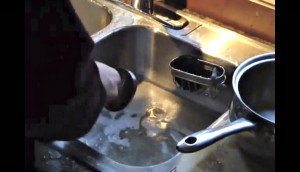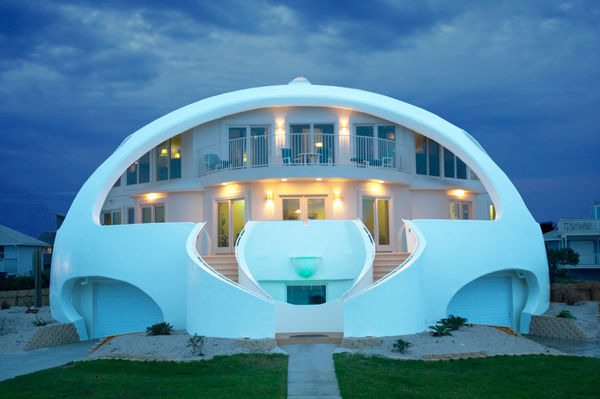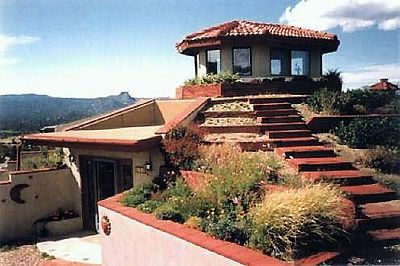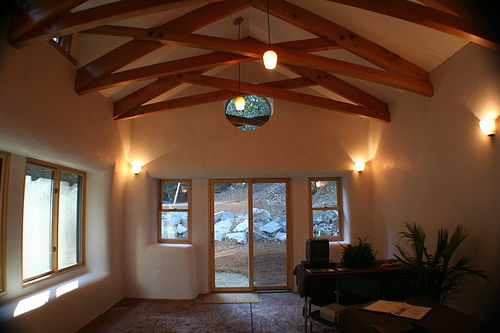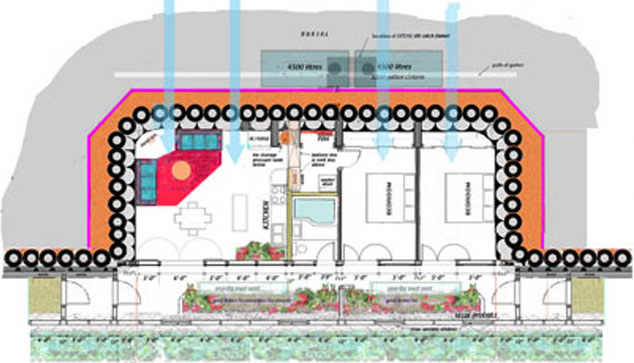London (CNN)-- What if buildings had lungs that could absorb carbon emissions from the city and convert them into something useful? What if they had skin that could control their temperature without the need for radiators or air-conditioning? What if buildings could come "alive?"
Science fiction?
"Not as such," claims Dr Rachel Armstrong, senior
TED
fellow and co-director of
Avatar
, a research group exploring the potential of advanced technologies in architecture. "Over the next 40 years, 'living' buildings -- biologically programmed to extract carbon dioxide out of the atmosphere -- could fill our cities."
Armstrong works on the cutting edge of "synthetic biology," a relatively new science devoted to the manufacture of life-like matter from synthesized chemicals, and is something of an evangelist for the discipline.
The chemicals Armstrong works with, concocted in the lab, are engineered to behave like organic microorganisms -- with the added benefit that they can be manipulated to do things nature can't. Armstrong refers to them as "protocells."
"For instance, a protocell could be mixed with wall paint and programmed to produce limestone when exposed to carbon (dioxide) on the surface of a building," she said. "Then you've got a paint that can actually eat carbon and change it into a shell-like substance."
So, just as iron rusts when it comes into contact with oxygen and water, protocells can produce simple chemical reactions when they come into contact with carbon dioxide (CO2) molecules, turning the CO2 into calcium carbonate, or limestone, which stops the greenhouse gas from rising up into the ozone layer.
As a by-product of this process, the British scientist says that limestone produced by protocells could naturally "heal" micro-fractures in walls, channeling through tiny breaks, helping to extend the life of any structure it was painted on to.
"And not only that," added Armstrong. "The thickness of the limestone will grow over time, creating insulation and allowing your building to retain more heat or indeed sheltering it from heating up underneath the sun."
The layer of limestone could take anywhere between a year and a decade to form depending on the concentration of carbon dioxide in the surrounding air. However Armstrong says that "eventually we will see protocell technology become self-repleting (able to replenish itself) and (it) will be considered alive."
Dick Kitney is professor of bio-engineering at Imperial College London and co-director of the
Centre for Synthetic Biology and Innovation
. He says that, while the concept is sound, moving it into industrial production is a different story.
"It's a question of scalability," he said. "Getting the process to work in the lab is one thing, but after that you need to work very closely with major industrial manufacturers to understand if it is at all possible to produce on a mass scale. Sometimes it's just not possible."
Kitney says that nobody has yet managed to get any synthetic biological product to the manufacturing stage: "The science is being taken very seriously -- particularly in the UK and U.S. ... but it's still early days."
While Armstrong says the science has been proven in the lab, she too acknowledges that commercial applications are still some years down the road.
"This is bulk chemical manufacturing we're talking about, so the process is slow," she said. "If it were pharmaceuticals it would be much quicker."
But Armstrong's work is gaining interest from the industrial sector. "There's a traditional paint manufacturer here in the UK that is looking into it, but we're all under non-disclosure agreements," she said.
Armstrong admits that, at present, the paint would be capable of absorbing only a tiny fraction of the carbon dioxide emitted in a city like London, which spewed out around 42 million tons in 2009, according to government figures.
"The primitive paints we are developing are not very efficient yet, " she added.
Armstrong doesn't think the paint will be ready for market much before 2014 and, at this stage, she cannot comment on how much it will cost to produce commercially. Despite this, she says a major Australian property developer has already placed a future order for it.
Award-winning British architect Richard Hyams, who worked for 12 years under internationally renowned architect Norman Foster before setting up his own practice, is also an advocate of self-regulating building materials.
But, he says, attitudes will have to change before this technology makes it into the mainstream.
"As with any significant step-change, it's slow to take off," said Hyams. "From developers, to agents, to buyers themselves, people generally don't want to be the first to risk investment in a relatively untested industry when the costs are high."
In addition, says Hyams, legislation is slow, "slicing off the worst building practices from the bottom, rather than advancing the best ideas at the top."
However, Armstrong and Hyams agree that, as the burden on cities to reduce their vast carbon footprints intensifies, the market will look to more radical solutions.
"We're also currently experimenting with the process of bioluminescence," said Hyams. "The idea is that carbon is absorbed by a building to create light. Can you imagine a whole city lit by the walls of its own buildings?"
Whatever the future has in store, our relationship with cities' megastructures and the carbon they produce will likely change. Armstrong concludes with a sobering thought:
"At present, buildings are big machines that take our resources and turn them into poison. In effect, we are living in their waste like we were living in the effluent of animals during the Agrarian revolution."














